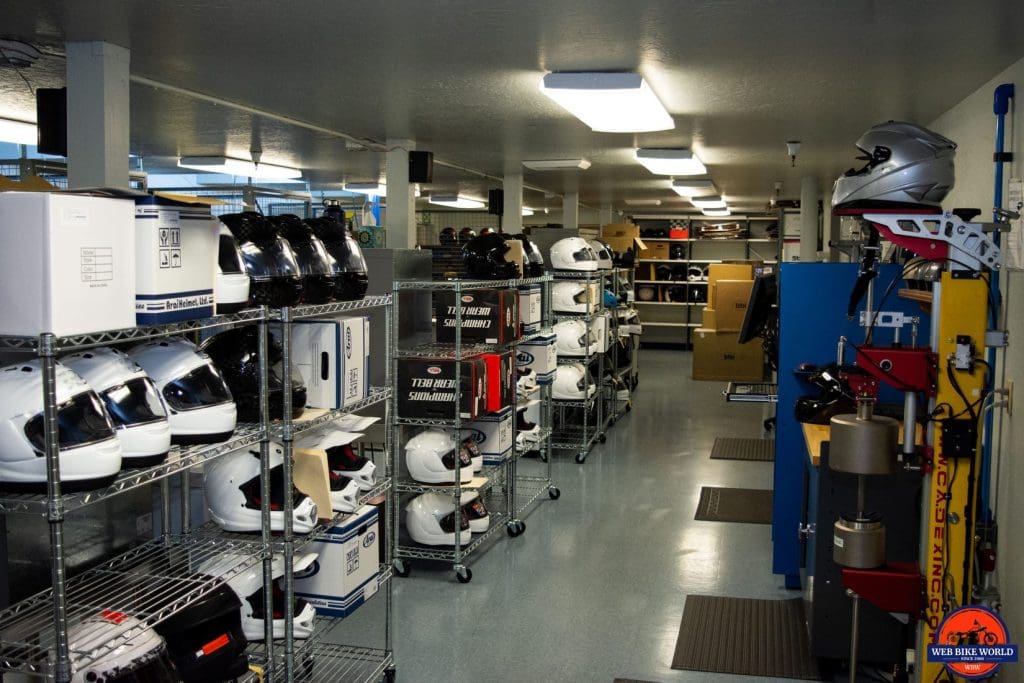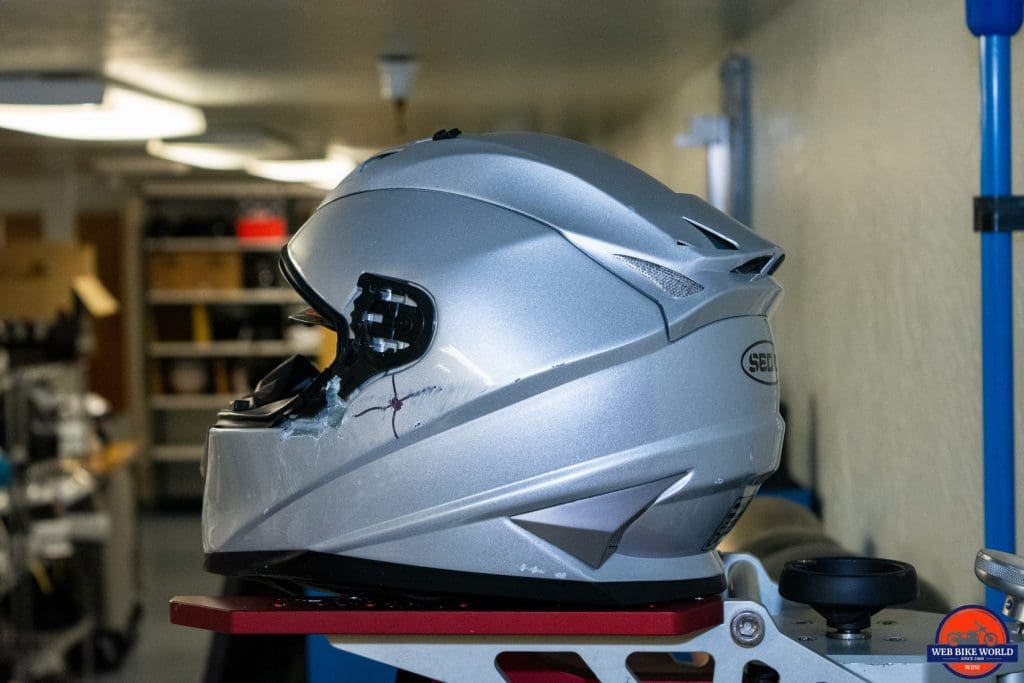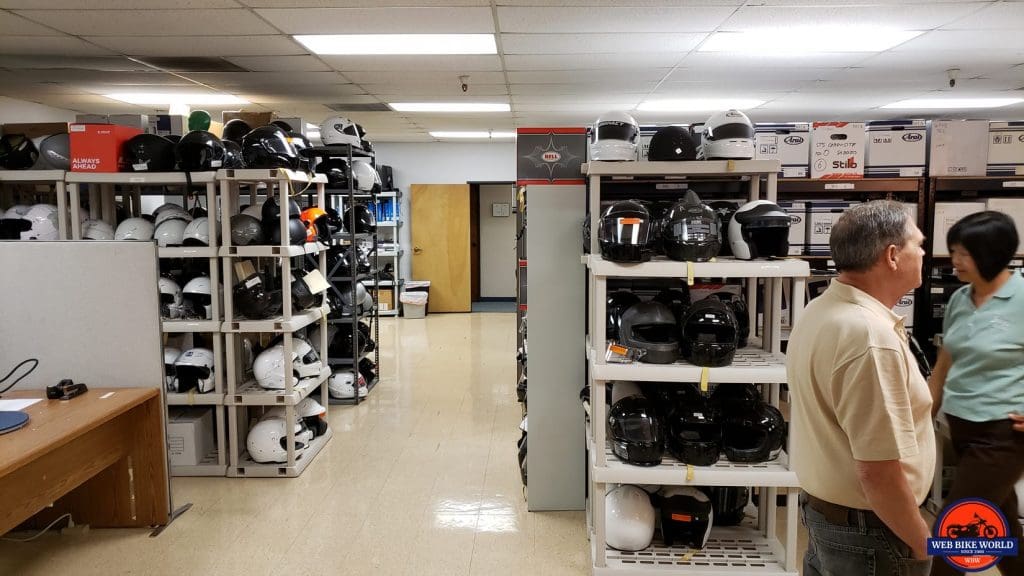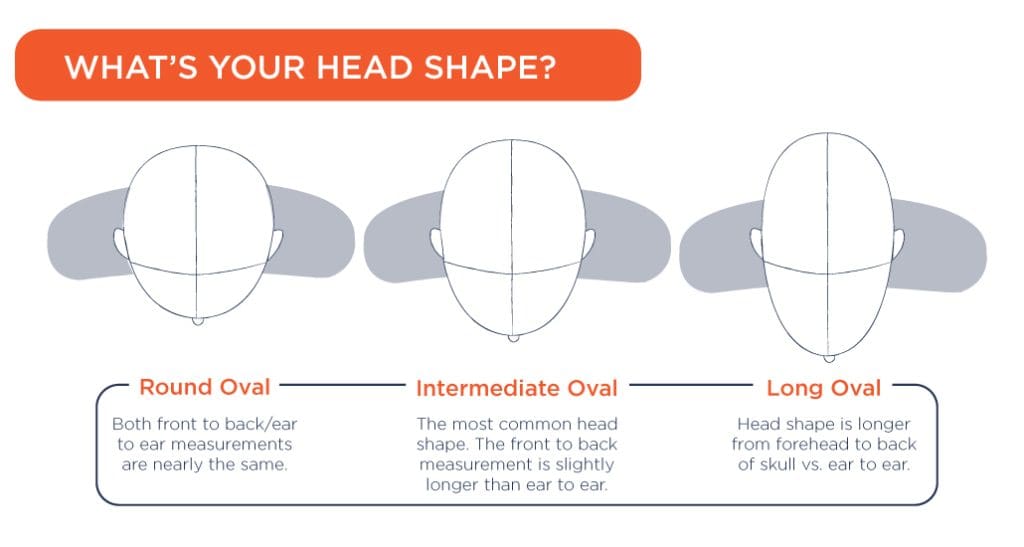admin
Staff member
The Snell Foundation is a non-profit organization that creates helmet standards for helmets for vehicular activities including motorcycles. My colleagues Jim and Cameron went to the Snell Foundation’s headquarters last year to see exactly how the professionals there do their testing and create the standards that have a major impact on the motorcycle industry and the racing industry.
The foundation’s mission is dedicated to the research, education, testing, and development of helmet safety standards. This isn’t just for motorcycles. It also matters for automobile racing, karting, bicycle, equestrian, harness racing, and other sports that require helmets. Snell has standards for more than just motorcycle helmets. It’s been an important force in the helmet industry Since its founding in 1957. It is recognized in the U.S. and around the world.
Every few years, Snell makes updates to its standard so that the standard continues to stay up to date and provide manufacturers with a standard to shoot for and consumers with a standard they know they can trust.
There is a new helmet standard for motorcycle helmets for 2020. It is called M2020, and will be the standard used moving forward. While it’s a lot like the previous Snell motorcycle helmet standard, it’s not the same, and because of this, we felt the need to take a detailed look at the new standard and tell our readers what it’s all about.
Much of the M2015 report from Snell and the M2020 are the same. I also feel it important to note that just because a motorcycle helmet might be M2015 certified and not M2020, doesn’t mean it’s an unsafe helmet. The M2015 standard was a good one, and any helmet that has that rating will do a good job of protecting you.
The M2020 standard simply takes things a step further. It improves upon the already quality standard that Snell put out. That means there are some important updates to the standard.
One of the most important updates for the M2020 standard is that there are actually two standards for impact. There’s impact test options M2020D and M2020R.
The M2020D is for markets that use DOT. The “D” in M2020D stands for DOT, and it means that the impact standard will be the same as M2015. The M2020R is for other markets. The R in the standard name stands for Regulation 22.
Why have two impact standards? It’s a way for Snell to make a standard that applies to the entire world. Snell said it best in its explanatory cover letter. I’ve included that explanation below:
“Industry leaders have urged that M2020 ought to enable continued production of configurations developed for M2015 compliance. They maintain and Snell agrees that these demands reflect the most impact energy management possible in a motorcycle helmet consistent with motorcyclists’ needs and with the requirements of mandatory standards in the United States and Japan. M2020D is formulated to serve this purpose. However, since M2015 demands complicated compliance with mandatory standards in place in Europe and other parts of the world, this M2020 draft allows a second impact test option, M2020R, with test severities are chosen to identify headgear with the greatest impact energy management consistent with motorcyclists’ needs and with the requirements of ECE Regulation 22 (ECE 22-05). It is hoped that M2020R will also enable compliance with FRHPhe-01 which will apply to helmets used in FIM sponsored competitive events.”
So, in essence, it’s a response to the industry’s response to FIM safety standard for competition and the new ECE regulations. Snell sees both ECE and FIM standards to be inadequate and has offered a special M2020 standard because of that. I see this as a good thing and a way for the standard to be used around the world.
The discrepancy between the standards comes down to this. Some consider the liner of a Snell-approved helmet to be too hard. They would prefer a softer helmet liner to absorb more energy. In concept, this makes sense, but the issue is that a higher speeds or if the helmet comes into contact with a sharper object, that softer liner can be problematic. Snell’s standard protects the head for higher-level impacts.
It really comes down to the individual accident you have. For example, an ECE helmet might be just fine if you’re on a scooter or small-displacement machine and go down at a low to moderate speed. However, if you’re traveling a highway speed, or collide with another vehicle the Snell helmet is likely to protect you better.
Still, because ECE is a government standard, Snell needs to offer a solution that will work with ECE. Hence the two standards: M2020D and M2020R.

Because there are two different standards now, the testing for these standards must be conducted differently. This should make perfect sense. Two standards mean two testing protocols.
According to documentation from Snell, the M2020D (Continuation of M2015 Requirements) require the following tests:
The M2020R (Consistent with European Demands (ECE 22-05) and with FIM FRHPhe-01) standard requires the following tests:
It’s important to note that all helmets will have to undergo the following:
These changes from the Snell M2015 standard to the M2020 standard should lead to better and safer helmets for years to come.
When it comes to implementation of the M2020 standard, the date set was October 1, 2019. The stickers shipped on April 1, 2019. Most racing organizations that actually require Snell will allow riders and drivers with the current and the next most recent standards to participate in racing.
In the case of M2020, this would mean the M2020 standard and the M2015 would both be allowed at events, but helmets that are Snell 2010 may not be. You should check with the racing organization to be sure that you have a helmet that is approved for participation.

Let’s take a closer look at the new standard and check out some of the details from the document itself. This is not a word for word reproduction of the standard but is instead my own version of it.
I have tried to parse the information and make it more easily digestible. If you want to see the real documentation, then you should check out the standard itself. I warn you, though, it can be kind of dense.
Snell’s M2020 standard is looking for a smooth shape overall. It notes that any protrusions “7 mm beyond the outer surface must readily break away.” On the flip side, anything (like a rivet) that goes into the helmet must not pose any potential hazard.
Also, add-ons or accessories (visors, neck curtains, face shields) can’t compromise the safety of the rider.
The shell of the helmet, again, needs to be smooth overall, and any rivets can’t be sharp or stick out beyond 2mm.
The material of the helmet’s interior should “not be harmed by exposure to sun, rain, dust, vibration, sweat or products applied to the skin or hair.” It can be removable, and it should not be known to be a material that is in any way dangerous or prone to high levels of bacteria.
It’s this part of the standard that encourages companies to use moisture-wicking, antimicrobial liners that are removable and washable.
The finish refers to more than just the paint. It’s about the smoothness of the exterior overall, even the metal parts. If there’s something that’s rough or could damage the rider in an accident, Snell won’t let that fly.
Chin straps are what we’re talking about here. Quick-release ones can be used but they can’t be something that can be easily released on accident. Also, fabric chin straps can’t be designed in a way where they might rip. Snell advises manufacturers to secure straps with a “metal hanger” that is then bolted to the shell.
The numbers for peripheral vision are clear. Snell puts them right out there. Here they are: horizontal clearance of at least 210 degrees, an upward clearance of at least 7 degrees, and a downward clearance of at least 30 degrees.
Because many helmets perform better at certain sizes than others, Snell requires that all of the sizes be listed when a helmet is trying to earn certification. Also, after the testing is complete the helmet must have a permanent label that lists the circumferences of a person’s head it is designed to work with properly.

In terms of finding the right helmet, I’d highly recommend a Snell certified helmet. They offer fantastic levels of protection. However, I do have to note the increase in price. Snell certification comes with a notable price hike.
You will have to decide for yourself if the hike in price is worth it. I would recommend you spend the money and be on the safe side, but I do feel there are plenty of very nice helmets out there that lack Snell certification. As was mentioned above, the right helmet for the job depends on the crash you have (if you have one). While Snell will better your chances of staying safe no matter what, there’s always an inherent risk whenever you throw a leg over a bike. At the very least wear a DOT-approved helmet, but if you can, get a Snell certified one.
Full-face helmets are the ones you’ll see with Snell certification—though Snell will certify others if they can pass the standard. Full face helmets are also the safest helmets you can buy. Personally, I find these to be the most comfortable, too. Are they the most convenient? No. I’d say modular helmets are.
Here are the types of helmets and a link to some of our recommendations and reviews on helmets of each type.

You’ll also need to think about the shape of your head and the shape of your helmet. Generally, helmets are made to fit three different head shapes: round oval, intermediate oval, and long oval.
Most riders have an intermediate oval head shape. This means you’ll find the most helmets out there, especially in North America, with an intermediate oval head shape.
Keep in mind that these head shapes are just guidelines. No helmet is going to fit you absolutely perfectly, but by going with the head shape and correct size, you should have a lid that will feel comfortable to wear hour after hour of riding.
Head shape plays no role in Snell certification. Helmets of all head shapes have passed the standard, and that means you should be able to find a Snell certified helmet no matter what shape head you have.
If you have more questions about helmets and finding the right helmet for your valuable noggin’, then check out our motorcycle helmet buying guide where we walk you through every part of the process.
If you have questions about Snell or the helmet standard, then I suggest you go to the Snell Memorial Foundation website.
The post The Complete Guide to Snell M2020 Standard appeared first on webBikeWorld.
Continue reading...
The foundation’s mission is dedicated to the research, education, testing, and development of helmet safety standards. This isn’t just for motorcycles. It also matters for automobile racing, karting, bicycle, equestrian, harness racing, and other sports that require helmets. Snell has standards for more than just motorcycle helmets. It’s been an important force in the helmet industry Since its founding in 1957. It is recognized in the U.S. and around the world.
Every few years, Snell makes updates to its standard so that the standard continues to stay up to date and provide manufacturers with a standard to shoot for and consumers with a standard they know they can trust.
There is a new helmet standard for motorcycle helmets for 2020. It is called M2020, and will be the standard used moving forward. While it’s a lot like the previous Snell motorcycle helmet standard, it’s not the same, and because of this, we felt the need to take a detailed look at the new standard and tell our readers what it’s all about.
Differences Between Snell M2015 & M2020
Much of the M2015 report from Snell and the M2020 are the same. I also feel it important to note that just because a motorcycle helmet might be M2015 certified and not M2020, doesn’t mean it’s an unsafe helmet. The M2015 standard was a good one, and any helmet that has that rating will do a good job of protecting you.
The M2020 standard simply takes things a step further. It improves upon the already quality standard that Snell put out. That means there are some important updates to the standard.
M2020D and M2020R
One of the most important updates for the M2020 standard is that there are actually two standards for impact. There’s impact test options M2020D and M2020R.
The M2020D is for markets that use DOT. The “D” in M2020D stands for DOT, and it means that the impact standard will be the same as M2015. The M2020R is for other markets. The R in the standard name stands for Regulation 22.
Why have two impact standards? It’s a way for Snell to make a standard that applies to the entire world. Snell said it best in its explanatory cover letter. I’ve included that explanation below:
“Industry leaders have urged that M2020 ought to enable continued production of configurations developed for M2015 compliance. They maintain and Snell agrees that these demands reflect the most impact energy management possible in a motorcycle helmet consistent with motorcyclists’ needs and with the requirements of mandatory standards in the United States and Japan. M2020D is formulated to serve this purpose. However, since M2015 demands complicated compliance with mandatory standards in place in Europe and other parts of the world, this M2020 draft allows a second impact test option, M2020R, with test severities are chosen to identify headgear with the greatest impact energy management consistent with motorcyclists’ needs and with the requirements of ECE Regulation 22 (ECE 22-05). It is hoped that M2020R will also enable compliance with FRHPhe-01 which will apply to helmets used in FIM sponsored competitive events.”
So, in essence, it’s a response to the industry’s response to FIM safety standard for competition and the new ECE regulations. Snell sees both ECE and FIM standards to be inadequate and has offered a special M2020 standard because of that. I see this as a good thing and a way for the standard to be used around the world.
The discrepancy between the standards comes down to this. Some consider the liner of a Snell-approved helmet to be too hard. They would prefer a softer helmet liner to absorb more energy. In concept, this makes sense, but the issue is that a higher speeds or if the helmet comes into contact with a sharper object, that softer liner can be problematic. Snell’s standard protects the head for higher-level impacts.
It really comes down to the individual accident you have. For example, an ECE helmet might be just fine if you’re on a scooter or small-displacement machine and go down at a low to moderate speed. However, if you’re traveling a highway speed, or collide with another vehicle the Snell helmet is likely to protect you better.
Still, because ECE is a government standard, Snell needs to offer a solution that will work with ECE. Hence the two standards: M2020D and M2020R.
Testing Helmets Differently

Because there are two different standards now, the testing for these standards must be conducted differently. This should make perfect sense. Two standards mean two testing protocols.
According to documentation from Snell, the M2020D (Continuation of M2015 Requirements) require the following tests:
- Flat Anvil – two impacts, the first at 7.75 m/sec and the second according to the test head form.
- Hemispherical Anvil – same as the flat.
- Edge Anvil – a single impact at 7.75 m/sec.
- Test Criteria – the recorded shock must not exceed the peak G level set for the test head form.
The M2020R (Consistent with European Demands (ECE 22-05) and with FIM FRHPhe-01) standard requires the following tests:
- Flat Anvil – a single impact at 8.2 m/sec
- Hemispherical Anvil – two impacts, the first at 7.70 m/sec and the second according to the test head form.
- Edge Anvil – a single impact at 7.75 m/sec.
- Test Criteria – the recorded shock must not exceed the peak G level set for that head form and the HIC calculated for the shock pulse must not exceed 2880.
- Although Snell’s directors have concluded that HIC is of little use in evaluating helmet protective capability, they agree that M2020R must still assure some reasonable compliance with the HIC criteria imposed in ECE 22-05 and in FRHPhe-01 and that applying a HIC criterion in M2020R may be the best way to obtain this assurance.
It’s important to note that all helmets will have to undergo the following:
- Provide a premium of protective capability
- Comparable in weight and bulk to helmet models currently certified to M2015
- Comparable in costs to helmet models currently meeting M2015.
- Capable of meeting mandatory requirements
- M2020D – intended to enable DOT and/or JIS as required in North America and Japan
- M2020R – intended to also enable ECE 22-05 and FIM FRHPhe-1 as required in Europe and elsewhere
These changes from the Snell M2015 standard to the M2020 standard should lead to better and safer helmets for years to come.
Timeline for Snell M2020 Implementation
When it comes to implementation of the M2020 standard, the date set was October 1, 2019. The stickers shipped on April 1, 2019. Most racing organizations that actually require Snell will allow riders and drivers with the current and the next most recent standards to participate in racing.
In the case of M2020, this would mean the M2020 standard and the M2015 would both be allowed at events, but helmets that are Snell 2010 may not be. You should check with the racing organization to be sure that you have a helmet that is approved for participation.
Details of the Snell M2020 Standard

Let’s take a closer look at the new standard and check out some of the details from the document itself. This is not a word for word reproduction of the standard but is instead my own version of it.
I have tried to parse the information and make it more easily digestible. If you want to see the real documentation, then you should check out the standard itself. I warn you, though, it can be kind of dense.
General
Snell’s M2020 standard is looking for a smooth shape overall. It notes that any protrusions “7 mm beyond the outer surface must readily break away.” On the flip side, anything (like a rivet) that goes into the helmet must not pose any potential hazard.
Also, add-ons or accessories (visors, neck curtains, face shields) can’t compromise the safety of the rider.
Shell
The shell of the helmet, again, needs to be smooth overall, and any rivets can’t be sharp or stick out beyond 2mm.
Materials
The material of the helmet’s interior should “not be harmed by exposure to sun, rain, dust, vibration, sweat or products applied to the skin or hair.” It can be removable, and it should not be known to be a material that is in any way dangerous or prone to high levels of bacteria.
It’s this part of the standard that encourages companies to use moisture-wicking, antimicrobial liners that are removable and washable.
Finish
The finish refers to more than just the paint. It’s about the smoothness of the exterior overall, even the metal parts. If there’s something that’s rough or could damage the rider in an accident, Snell won’t let that fly.
Retention System
Chin straps are what we’re talking about here. Quick-release ones can be used but they can’t be something that can be easily released on accident. Also, fabric chin straps can’t be designed in a way where they might rip. Snell advises manufacturers to secure straps with a “metal hanger” that is then bolted to the shell.
Peripheral Vision
The numbers for peripheral vision are clear. Snell puts them right out there. Here they are: horizontal clearance of at least 210 degrees, an upward clearance of at least 7 degrees, and a downward clearance of at least 30 degrees.
Sizing
Because many helmets perform better at certain sizes than others, Snell requires that all of the sizes be listed when a helmet is trying to earn certification. Also, after the testing is complete the helmet must have a permanent label that lists the circumferences of a person’s head it is designed to work with properly.
Finding the Right Helmet for You

In terms of finding the right helmet, I’d highly recommend a Snell certified helmet. They offer fantastic levels of protection. However, I do have to note the increase in price. Snell certification comes with a notable price hike.
You will have to decide for yourself if the hike in price is worth it. I would recommend you spend the money and be on the safe side, but I do feel there are plenty of very nice helmets out there that lack Snell certification. As was mentioned above, the right helmet for the job depends on the crash you have (if you have one). While Snell will better your chances of staying safe no matter what, there’s always an inherent risk whenever you throw a leg over a bike. At the very least wear a DOT-approved helmet, but if you can, get a Snell certified one.
Helmet Types
Full-face helmets are the ones you’ll see with Snell certification—though Snell will certify others if they can pass the standard. Full face helmets are also the safest helmets you can buy. Personally, I find these to be the most comfortable, too. Are they the most convenient? No. I’d say modular helmets are.
Here are the types of helmets and a link to some of our recommendations and reviews on helmets of each type.
Head Shape

You’ll also need to think about the shape of your head and the shape of your helmet. Generally, helmets are made to fit three different head shapes: round oval, intermediate oval, and long oval.
Most riders have an intermediate oval head shape. This means you’ll find the most helmets out there, especially in North America, with an intermediate oval head shape.
Keep in mind that these head shapes are just guidelines. No helmet is going to fit you absolutely perfectly, but by going with the head shape and correct size, you should have a lid that will feel comfortable to wear hour after hour of riding.
Head shape plays no role in Snell certification. Helmets of all head shapes have passed the standard, and that means you should be able to find a Snell certified helmet no matter what shape head you have.
If you have more questions about helmets and finding the right helmet for your valuable noggin’, then check out our motorcycle helmet buying guide where we walk you through every part of the process.
If you have questions about Snell or the helmet standard, then I suggest you go to the Snell Memorial Foundation website.
The post The Complete Guide to Snell M2020 Standard appeared first on webBikeWorld.
Continue reading...


